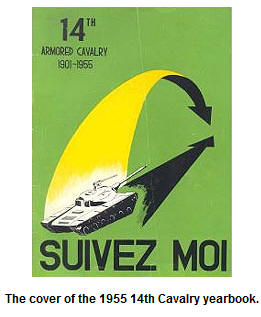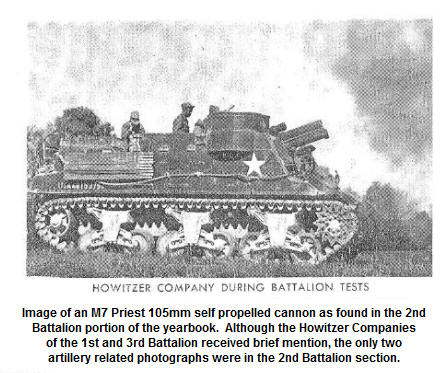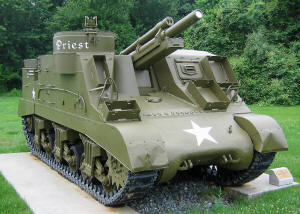|
The Birth of the HOW
14th Armored Cavalry
Yearbook 1955
There are four unit yearbooks for the 14th Armored Cavalry from
their years in Germany: 1952, 1954, 1955 and 1960. They were
published by various companies from the American high school
yearbook industry, each looking to capitalize on the potential new
market of the Army in Germany. The books follow a similar pattern,
the history of the Regiment, salutary letters from senior
commanders, sections devoted to each battalion with short text
blocks relating highlights of the year with accompanying photos and
then a concluding portion of Rhoen tourist information. There
usually was a page or two recalling the border mission in general
terms. 
Although lacking details, these military yearbooks can be great
sources particularly when it comes to names, so crucial in the
search for first hand recollections. The 1952 yearbook featured
group photos of each platoon but the troopers were unnamed. This
book did, however, contain a complete Regimental roster in the final
pages. The 1954 book had individually named photos of each member
of the Regiment, the 1960 yearbook had platoon group photos with
names and ranks as captions but somehow, the 1955 book went to print
with no rosters and no captioned individual soldier photographs.
What a missed opportunity.
Here is the text that introduced the 2nd Battalion portion of the
1955 yearbook.
*******
The
Second Battalion Story
As the year 1955 came to a close the Second Battalion was able to
look back with pride on its many accomplishments in the fields of
operation and training as well as the superb showing in the world of
sports.
Throughout the year the Second Battalion has participated in
numerous CPXs, FTXs and maneuvers with the NATO Maneuver, Cordon
Bleu, which emphasized realism, being the outstanding event of the
year.
The men of Daley Barracks did much to foster German American
relations by the way of Armed Forces Day in May in which the local
townspeople toured the post. At Christmas time the post facilities
were opened to orphans in the vicinity of the Kaserne.
There were individual honors that cannot go without mention. Among
some of the highlights was Howitzer Company excelling in the annual
Howitzer Company tests. In the tank platoons, 2nd Lt John P.
Dowling brought his platoon to the top as Best Tank Platoon of the
battalion.
In the field
of sports the Cavaliers have been well assisted by members
of the 2nd Battalion on all regimental sport teams. Company
level athletics have had an excellent participation and
enthusiasm was hard to equal. Headquarters Company captured
company level basketball honors. F Company took the top
spot in the Touch Football completion On the Regimental
level there were many who indicated the Second Battalion up
with the best.
The past year saw Lt. Col. Dan P. Briggs take command of the
Battalion while Lt. Col. James H. W. Treadwell moved to HQ 14th, in
Fulda Germany.
The Second Battalion, Second to None has continuously strived to do
best and has never failed to make the Maximum Effort in the mission
as a Bulwark of Freedom.
*****
Howitzer Company
- this is the first time that the Howitzer Battery is mentioned in
any source related to the 14th ACR. Whether an existing USAREUR
field artillery battalion was broken up with firing batteries then
attached to each recon battalion, which I believe was the case, or
howitzers were drawn from depot stocks and then staffed by newly
assigned soldiers is unknown. It is an unexplored major innovation
in the development of the regimental cavalry organization and sadly,
something that the Armor and Field Artillery professional magazines
from that period seem to have missed. I have no names or further
details to attach to the first 2 - 14 Howitzer battery. In the 1960
14th Cavalry yearbook, the Howitzer Battery is recalled in detail. innovation
in the development of the regimental cavalry organization and sadly,
something that the Armor and Field Artillery professional magazines
from that period seem to have missed. I have no names or further
details to attach to the first 2 - 14 Howitzer battery. In the 1960
14th Cavalry yearbook, the Howitzer Battery is recalled in detail.
Lt. John P. Dowling
- I could find nothing related to this top - tanker; the name is not
uncommon with two or three exact matches found in the Social
Security Death Index in the appropriate age range. There were no
conclusive obituaries or newspaper accounts tying the name to
military service. There was a LTC (ret) John H. Dowling, an Air
Defense officer who matched at about the correct age, but no
conclusive links to Kissingen or the cavalry.
SCO LTC James H.W.
Treadwell
- following command, reported to Fulda as the RXO. LTC (ret)
Treadwell spent twenty years on active duty, went to graduate school
and then pursued a second career teaching and bring civilian
educational opportunities to American soldiers.
His obituary is
here.
SCO LTC Dan P. Briggs
- Following his command in Kissingen, Stars and Stripes reported
that he was assigned to 7th Army HQ G2 section. Col (ret) Briggs
was a US Military Academy graduate and career soldier, his
obituary is
here.
I wish I
could have pulled more from the yearbook but unfortunately
this was not the case. It was a great souvenir for the
troops and now a rare book but of somewhat limited value in
terms of recalling the American experience in Bad Kissingen
and the border region. But then again - it recalled the
Birth of the How and that is something certainly worthy or
remembering.
| |
|
|
| |
 |
|
| |
Colonel Briggs later in his career at Fort Knox. |
|
| |
|
|
| |
Click on the
thumbnail to view the full-sized picture
 |
|
| |
An M7 Priest in WWII paint scheme on display at APG. |
|
August 2014 |